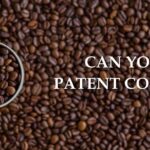Filing for a Patent Around the World
You have a great idea. You think it is a new invention that will change the U.S. market. All your friends and neighbors will want it and you will have customers from coast to coast. But why stop there? Maybe this invention will be the hottest new product around the world! So, you start to wonder, how do I get a patent for THE WORLD?! This series explores the ins and outs, as well as some facts and misconceptions, of trying to secure patent rights all over the globe.
Table of Contents
- EVALUATING THE POSSIBLE VS. THE PRACTICAL
- THE “INTERNATIONAL” PATENT MYTH
- THE MERCY RULE
- GETTING PERMISSION TO LEAVE THE COUNTRY
- THE PEOPLE THERE WERE SO FRIENDLY
- FORGET PARIS, LET’S GO TO SWITZERLAND!
- SO, WHAT ARE MY CHANCES?
EVALUATING THE POSSIBLE VS. THE PRACTICAL
Before we wander into the weeds of filing for patent protection outside the U.S., the very first question that any inventor or entrepreneur should be asking is do I even want to pursue a patent outside the United States? For some people, the answer can be a pretty firm “no.” While it is always possible to do so, it may not be practical or worth the investment of time and money.
For starters, the U.S. is clearly the world’s most powerful economy with an enormous consumer class. Therefore, the rewards of selling to this market may be all that a small inventor could want. Smaller economies with much smaller populations may not be worth the effort.
Getting a business off the ground in the U.S. is hard enough, and getting a business off the ground in other countries is often even harder. For many inventors and small businesses, time and energy may be better spent focusing on the market you know with local contacts and manufacturers, rather than spreading yourself thin with overseas pursuits.
Filing for patent protection in other countries can be very expensive. While some are relatively much more affordable than the U.S., most are quite pricey with government fees and the costs of attorneys in those countries. Again, for many people with limited budgets for operating their businesses, much less securing their intellectual property, it just may not make sense economically to spend money that ultimately may not provide much in return.
Those are some very basic points that every inventor and businessperson should consider. It may be legally possible to pursue patent protection outside the U.S., but it may not be practical. You will always want to try your best to identify what are the most valuable markets for your invention and, if it seems appropriate, consult your patent attorney about filing for patent protection in those markets.
THE “INTERNATIONAL” PATENT MYTH
A common thought shared by many clients is “I want to get a worldwide patent.” Unfortunately, such a thing does not exist. Most every country has its own body of patent law. Accordingly, to secure patent rights in a country you must ultimately file a national patent application in that country, i.e., you will have to file a separate patent application for each country in which you want to obtain patent protection for your invention. Further, the patent applications will be reviewed according to the patent laws of that country, so it is possible for you to be successful in one country and not in another.
The requirement to file patent applications in the individual countries is one of the main reasons that this pursuit can be so costly. For each patent application you will have to pay the government fees, which can vary in cost from country to country, and accordingly will multiply your total investment in intellectual property protection. In the U.S., for example, you usually have an initial fee at filing but no further fees until the patent application is granted. Most other nations require similar fees, plus additional annual fees simply to have your patent application in process at the national patent office of that country. The government fees can therefore be quite steep.
You also usually have to pay local attorneys in those nations. Since there is a different body of law in most countries, those countries require that a local attorney licensed under those laws handle the patent applications. For example, your U.S. patent attorney can assist you with the filing and handling of your U.S. patent application, but you will then need a German patent attorney for your German patent application, a Japanese patent attorney for your Japanese patent application, and so forth.
As you can see, there is no shortcut to patent protection in other countries, and the process can be quite expensive, which is a substantial consideration before deciding to file outside the U.S.
THE MERCY RULE
In many youth sports, there is a concept called the mercy rule, in which a game is often accelerated or terminated when one team is so far ahead that it would be cruel to continue to play as dictated by the rules of the game. The governing bodies of these leagues feel pity for the losing team, and therefore cut them a break and suspend the rules.
In the patent world, one of the most important rules is confidentiality, that is to say an invention must be kept private and known only to the inventors before filing an application for a patent, and there usually is not much mercy given to those who break this rule. If the invention is shown to the public in essentially any manner, then the inventiveness can be destroyed. For many independent inventors and small businesses, they routinely and unknowingly destroy their patent rights through public disclosure, such as by offering to sell the invention or displaying it at the workplace or a trade show, before a patent application is filed.
Fortunately, the United States has a mercy rule of sorts for such innocent mistakes. U.S. patent law has an exception built into the rules known as the “grace period,” wherein if an inventor discloses an invention to the public before filing for a patent, the inventor has one year in which to file a U.S. patent application. So what does that have to do with filing outside the U.S.?
Unfortunately, the grace period is NOT the rule for nearly all foreign countries. Public disclosure is usually an absolute bar against filing for a patent. Your patent rights in those countries are immediately destroyed the moment you breach that confidentiality. Therefore, if you are considering filing for a patent outside the U.S., you need to inform your patent attorney as to any type of public disclosure that may have occurred, as well as check what the laws are for that country as a select few also employ a grace period like in the U.S. Your patent attorney should advise you of this, but it is always good to be proactive in the process. If not, you might end up wasting substantial time and money in obtaining a patent that is later invalidated due to that public disclosure.
GETTING PERMISSION TO LEAVE THE COUNTRY
If you are a U.S. citizen, your pursuit of a patent outside of the U.S. is subject to a relatively unknown provision of U.S. patent law, and that is the granting of a foreign filing license.
Inventions obviously can involve any type of technology. For the vast majority, the inventions are primarily for domestic sale and use by any person or company in the general marketplace. However, some inventions relate to technologies for which the U.S. government has a national security interest, such as military applications or critical infrastructure areas like energy, transportation, and communications. Such inventions can be barred from filing in a foreign nation in order to protect the relevant national security interest.
Accordingly, no patent application can be filed outside the U.S. for an invention in which at least one of the inventors is a U.S. citizen without first obtaining permission to do so from the U.S. government. Usually, the foreign filing license is granted after the filing of a U.S. patent application. When the U.S. patent application is filed, a standard review is conducted for national security reasons, and, if there are no issues, the foreign filing license is granted shortly thereafter.
However, there can be circumstances, especially for U.S. inventors working for or with a foreign or multinational company, that a patent application may be first filed outside of the U.S. In such a situation, it is advisable to first file in the U.S. to obtain the foreign filing license. Alternatively, a request can be made to obtain the foreign filing license independent of filing a patent application in the U.S.
Very few of the millions of patent applications are ever subject to a national security concern, so foreign filing licenses are almost always granted. That being said, the procedure of obtaining a foreign filing license still must be followed before pursuing patent protection overseas, even if you are certain that your invention does not relate to any such technologies.
THE PEOPLE THERE WERE SO FRIENDLY
Like taking a trip, how friendly the local populace is to visitors can be an important factor in choosing a vacation or travel spot, and the same applies to patents.
As discussed above, marketing is a big consideration in choosing where to pursue patent rights. However, the local government is also a major factor. In the U.S., for example, patent rights are very strongly protected by the legal system, and the penalties for violating those patent rights can be severe. Other countries, due to instability or form of government, are not strong protectors of patent rights.
And enforcement matters a great deal. Patent rights are usually only as valuable as the force of law that backs them. If a government and court system do not, from a practical perspective, protect and enforce patent rights, then the rights are essentially not worth the paper they are printed on. Sure, they might act as at least a visual deterrent to potential infringers, but they possess no real power.
Therefore, when choosing what countries to file for patent protection, carefully evaluate the enforceability of any patent rights you may ultimately secure.
Intellectual Property Playbook
An Entrepreneur's Guide To Patents, Trademarks, and Copyrights GET THE PLAYBOOK
FORGET PARIS, LET’S GO TO SWITZERLAND!
We’ve already discussed the rules of priority under the Paris Convention, which generally established the rule that any patent application filed in a contracting State(s) within 12 months of the earliest patent application filing date would be given priority to that earliest date.
The Paris Convention was the only body of international patent law for many years until the arrival of the Patent Cooperation Treaty, or PCT. Unfortunately, they did not come up with an acronym that could easily be distinguished from the Paris Convention, but I digress. The PCT is an extensive international agreement finalized in 1970 that sought to harmonize the various national laws to facilitate filing of one patent application in multiple countries and regions. The PCT is administered by the World Intellectual Property Organization (WIPO) headquartered in Geneva, Switzerland.
The scope and content of the PCT is massive and cannot be explored in any detail now, but the most practically relevant rule for many inventors is the additional time that the PCT provides inventors to determine in what countries they wish to pursue patent rights. The PCT extends the Paris Convention filing deadline from 12 months to a maximum of 30 months, which is usually advantageous considering the generally high cost of filing in multiple countries.
The Paris Convention rules do still apply, but the PCT allows inventors to file one International Application by the 12-month deadline. It is very important to note that this International Application does not grant patent rights. The International Application reserves the right to file for patent protection in PCT member countries within that additional 18 months beyond the one-year deadline. Therefore, the International Application is essentially a bridge that pushes back the deadline, though you still ultimately have to file national applications in other countries.
There is far more to the PCT than merely buying inventors more time to make business decisions, but this is the provision of most interest. Be sure to ask your patent attorney about other possible advantages of the PCT as it relates to the markets you wish to explore.
SO, WHAT ARE MY CHANCES?
One of the big questions that inventors ask is regarding their chances of getting patents for their inventions. Without trying to sound too much like a lawyer, there truly is no way to know whether or not a patent would be granted, though an assessment of chances can be made. Such an assessment is challenging in the U.S., let alone for other countries. That being said, it is possible to provide patent applicants with some idea of what patents and other publications exist that could prevent them from obtaining patent rights.
“Prior art” is the general phrase used to describe publications and disclosures, such as patents, patent applications, journal articles, marketing materials, and even audio and video recordings, that disclose information relating to a particular invention. If one or more of these prior art publications describes your invention, you may not be able to secure patent rights.
As discussed last week, one option for filing outside the U.S. is via the Patent Cooperation Treaty (PCT). The most notable advantage is that a PCT application provides additional time to decide whether or not to file in one or more countries. Another lesser-known advantage is the International Search Report (ISR). After a PCT application is filed, an international search of prior art is made by an international searching authority (ISA). This search results in a list of the most relevant prior art documents, which is published in the ISR. In addition, the ISR ranks the prior art documents based on relevance to the claims of the patent application so you have some idea how problematic a reference may be.
The first benefit of the ISR is that patent applicants receive a list of relevant patent publications that the applicants can review in determining whether or not to proceed further in filing outside their home countries, particularly whether or not to expend the additional costs, or ways to revise the patent claims to avoid these references. A second benefit is that many national patent offices will rely on the international search report instead of doing their own search, which could be very beneficial if the report shows no conflicting patent publications.
Therefore, the PCT can provide some guidance in addition to an extended deadline for filing.
Brought to you By:
Stephen Meyer
Patent Attorney







